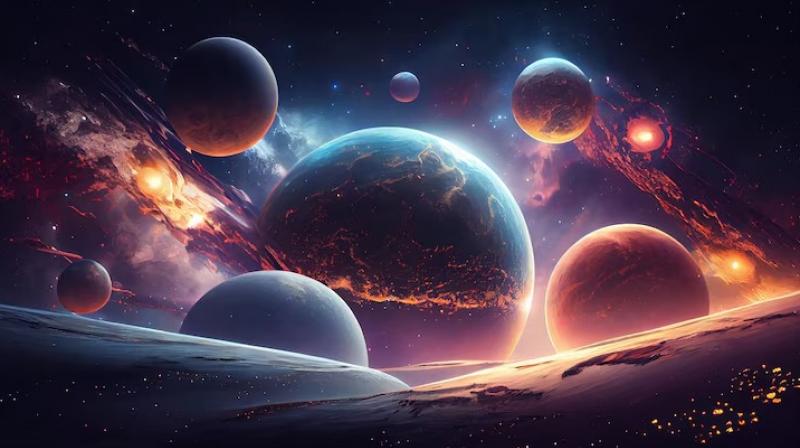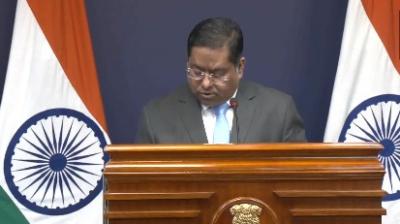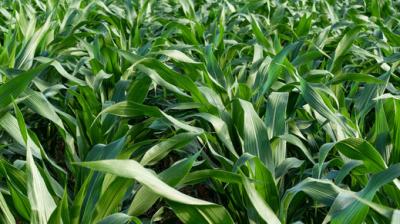
“This is a revolutionary moment,” he said. “It’s the first time humanity has seen a potential biosignature on a habitable planet.”
Indian-Origin Astrophysicist Leads Discovery of Potential Life-Sign on Exoplanet K2-18b, Latest Updates:
Indian-origin astrophysicist Dr. Nikku Madhusudhan and his team have claimed to have found the strongest possible signs of extraterrestrial life on a distant planet known as K2-18b, according to a report by ANI citing The New York Times.
The study was published on Wednesday in The Astrophysical Journal Letters.
K2-18b is a massive exoplanet located about 120 light-years away from Earth. It orbits a star and is not part of our solar system.
Scientists have analyzed the atmosphere of K2-18b multiple times. In each analysis, they consistently detected a particular molecule that, on Earth, is only produced by living organisms—especially marine algae. There is no known non-living or natural process on Earth that can generate this molecule.
If this same molecule is present in large quantities on K2-18b, it could indicate the presence of living organisms or some form of life similar to what we know on Earth.
Dr. Nikku Madhusudhan, an astronomer at the University of Cambridge and the lead author of the new study, said during a news conference on Tuesday, “It is in no one’s interest to claim prematurely that we have detected life.” He added that the most accurate way to describe his team’s findings is that K2-18b appears to be “engulfed by a warm ocean, brimming with life.”
“This is a revolutionary moment,” he said. “It’s the first time humanity has seen a potential biosignature on a habitable planet.”
Other scientists have described the findings as intriguing. “It’s not nothing,” said Stephen Schmidt, a planetary scientist at Johns Hopkins University. He added, “It’s a hint. But we cannot conclude it’s habitable yet.”
Dr. Nikku Madhusudhan led the research team that studied K2-18b’s atmosphere using data from the James Webb Space Telescope. His work focuses on exoplanetary atmospheres, planetary habitability, and biosignature gases — potential indicators of life.
K2-18b belongs to a planetary system centered around a star named K2-18. The planet was discovered in 2017 by Canadian astronomers using ground-based telescopes in Chile. K2-18b is classified as a sub-Neptune — a type of planet that is larger than Earth (about 2.6 times its radius) but smaller than Neptune.
It is neither rocky like Earth nor fully gaseous like Jupiter. Instead, it may be a Hycean planet — a term introduced in 2021 by Madhusudhan and his team. The word “Hycean” is a combination of hydrogen and ocean, used to describe planets that may have deep, warm oceans of liquid water beneath hydrogen-rich atmospheres containing methane and other carbon-based compounds.
Madhusudhan and his team detected several molecules they had predicted would be present on a Hycean planet, along with the unexpected presence of another molecule — dimethyl sulfide (DMS), made up of sulfur, carbon, and hydrogen. On Earth, DMS is produced solely by living organisms, particularly marine algae, and contributes to the distinctive smell of the ocean. Due to this, scientists have long considered DMS a potential biosignature — a chemical indicator that could point to life on other planets. Therefore, finding DMS in the atmosphere of an exoplanet could suggest biological activity, though more evidence is required to confirm the presence of life.
Last year, Madhusudhan and his team observed an even stronger signal of dimethyl sulfide, alongside a similar compound, dimethyl disulfide.
"It is a shock to the system," Madhusudhan said. "We spent an enormous amount of time just trying to get rid of the signal."
In conclusion, while the detection of dimethyl sulfide (DMS) in K2-18b's atmosphere is an exciting hint that life might exist on this distant world, scientists urge caution. There’s still much uncertainty about the planet’s true nature — whether it's a life-friendly Hycean world or a hostile rocky planet with a scorching atmosphere. Researchers emphasize the need for further observations and lab experiments to better understand these alien environments. As planetary scientist Matthew Nixon put it, we’re only beginning to uncover the mysteries of such exotic worlds.
Scientists are urging caution despite the exciting detection of dimethyl sulfide on exoplanet K2-18b, a potential sign of life. They emphasize that we are still in the early stages of understanding such distant, exotic worlds. NASA’s James Webb Space Telescope will continue examining K2-18b, but early findings could change with more data. Meanwhile, more advanced telescopes are being developed to study habitability beyond Earth. However, funding cuts to NASA’s science budget — as reportedly planned by the Trump administration — could halt future astrobiology projects, potentially putting the search for extraterrestrial life at risk.













